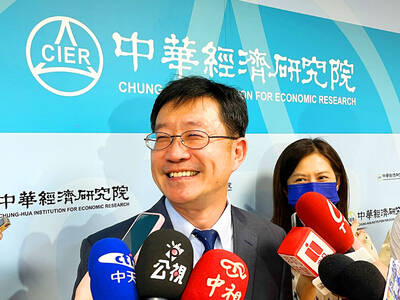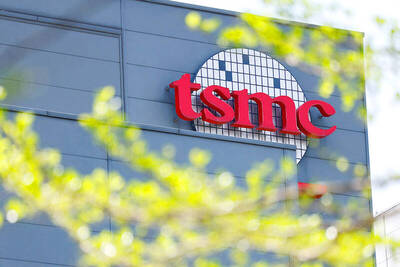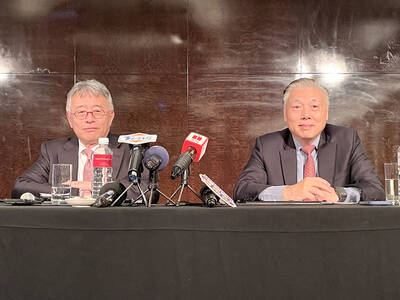Turkmenistan has become the latest target of China’s hunger for energy, spelling danger for Europe’s hopes of making the reclusive gas-rich Central Asian state a major source of its energy supplies.
Beijing has invested heavily in Turkmenistan this year, loaning Ashgabat billions and eyeing its largest gas field as part of a broader strategy to wrap up Central Asian energy resources to feed its energy-starved industries.
The EU, which has long courted Ashgabat as a possible direct source of natural gas shipments to break its dependence on Russian energy supplies, has been slow to counter China’s push.
“There’s no wonder that the Chinese are moving rapidly,” Richard Jones, deputy executive director of the International Energy Agency (IEA) said on the sidelines of a energy conference in Ashgabat.
“They’re moving all over the world in oil and gas and even coal,” he said.
“Right now ... the Chinese have a progressive leadership and they’re doing things more quickly than Europe, which isn’t a country, it’s a consortium of 30 countries,” Jones said.
GAS RESERVES
Turkmenistan, an isolated and repressive ex-Soviet republic bordering the Caspian Sea, is believed to hold the world’s fourth-largest reserves of natural gas, although comprehensive studies of its fields have not yet been concluded.
Ruled for two decades by eccentric dictator Saparmurat Niyazov, who died in 2006, Turkmenistan failed to invest in either production or diversifying export routes, spending instead on one of the world’s most lavish personality cults.
This left Moscow with a near monopoloy on Turkmen energy exports through its network of aging Soviet-era pipelines, a problem highlighted when a pipeline explosion earlier this year ground exports to a halt.
Russian energy-giant Gazprom, which uses Turkmen gas to boost its supplies to Europe, has insisted on lower prices from Turkmenistan as demand from its EU customers has plummeted as a result of the global financial slowdown.
MONEY DRAIN
Ashgabat is believed to have been losing as much as US$1 billion a month on exports during the row, which had raised hopes that the reclusive state might be more receptive to offers from Western energy firms.
Turkmenistan has also long been a proposed supplier for the stagnated Nabucco project, a trans-Caspian pipeline, which would theoretically deliver Turkmen gas to the heart of Europe, allowing it to bypass Russia.
But while Europe has struggled to overcome the political and technical stumbling blocks of Nabucco, China has moved swiftly to fill the gap, said a senior Western diplomat who requested anonymity.
Beijing in June gave Ashgabat a US$4 billion loan seen as an attempt to win the rights to Turkmenistan’s massive South Yolotan gas field, and it will soon unveil a 7,000km-long pipeline for Turkmen gas.
“It’s easier for them to work with the CNPC [China National Petroleum Co, 中國石油天然氣] because to them, it’s China Inc. They get the technology, the funding, etc, all wrapped up in one package,” the diplomat said.
“The way they operate, they control the actual production. The Chinese make it quite attractive to them, because they can add credits,” the envoy said.
SOME GOOD NEWS
But the news hasn’t been all bad for European energy firms this year, despite their inability to keep pace with Beijing.
German firm RWE, a member of the Nabucco pipeline consortium, concluded an exploration and production deal in the Turkmen section of the Caspian earlier this year.
The deal, struck in July at the height of the row between Russia and Turkmenistan, was widely seen as a signal from Ashgabat that it was considering throwing its weight behind the project.
Although a spokeswoman for RWE declined to comment on the political significance of the deal, she said that the firm viewed the deal as a first step on gaining greater access to the isolated state’s energy riches.
“What I’d suggest is to take it as a starting point for a long-term partnership. This is what we’re aiming for: a long-term, sustainable relationship with Turkmenistan,” spokeswoman Carolin Reese said.

WEAKER ACTIVITY: The sharpest deterioration was seen in the electronics and optical components sector, with the production index falling 13.2 points to 44.5 Taiwan’s manufacturing sector last month contracted for a second consecutive month, with the purchasing managers’ index (PMI) slipping to 48, reflecting ongoing caution over trade uncertainties, the Chung-Hua Institution for Economic Research (CIER, 中華經濟研究院) said yesterday. The decline reflects growing caution among companies amid uncertainty surrounding US tariffs, semiconductor duties and automotive import levies, and it is also likely linked to fading front-loading activity, CIER president Lien Hsien-ming (連賢明) said. “Some clients have started shifting orders to Southeast Asian countries where tariff regimes are already clear,” Lien told a news conference. Firms across the supply chain are also lowering stock levels to mitigate

Six Taiwanese companies, including contract chipmaker Taiwan Semiconductor Manufacturing Co (TSMC, 台積電), made the 2025 Fortune Global 500 list of the world’s largest firms by revenue. In a report published by New York-based Fortune magazine on Tuesday, Hon Hai Precision Industry Co (鴻海精密), also known as Foxconn Technology Group (富士康科技集團), ranked highest among Taiwanese firms, placing 28th with revenue of US$213.69 billion. Up 60 spots from last year, TSMC rose to No. 126 with US$90.16 billion in revenue, followed by Quanta Computer Inc (廣達) at 348th, Pegatron Corp (和碩) at 461st, CPC Corp, Taiwan (台灣中油) at 494th and Wistron Corp (緯創) at

NEW PRODUCTS: MediaTek plans to roll out new products this quarter, including a flagship mobile phone chip and a GB10 chip that it is codeveloping with Nvidia Corp MediaTek Inc (聯發科) yesterday projected that revenue this quarter would dip by 7 to 13 percent to between NT$130.1 billion and NT$140 billion (US$4.38 billion and US$4.71 billion), compared with NT$150.37 billion last quarter, which it attributed to subdued front-loading demand and unfavorable foreign exchange rates. The Hsinchu-based chip designer said that the forecast factored in the negative effects of an estimated 6 percent appreciation of the New Taiwan dollar against the greenback. “As some demand has been pulled into the first half of the year and resulted in a different quarterly pattern, we expect the third quarter revenue to decline sequentially,”

ASE Technology Holding Co (ASE, 日月光投控), the world’s biggest chip assembly and testing service provider, yesterday said it would boost equipment capital expenditure by up to 16 percent for this year to cope with strong customer demand for artificial intelligence (AI) applications. Aside from AI, a growing demand for semiconductors used in the automotive and industrial sectors is to drive ASE’s capacity next year, the Kaohsiung-based company said. “We do see the disparity between AI and other general sectors, and that pretty much aligns the scenario in the first half of this year,” ASE chief operating officer Tien Wu (吳田玉) told an